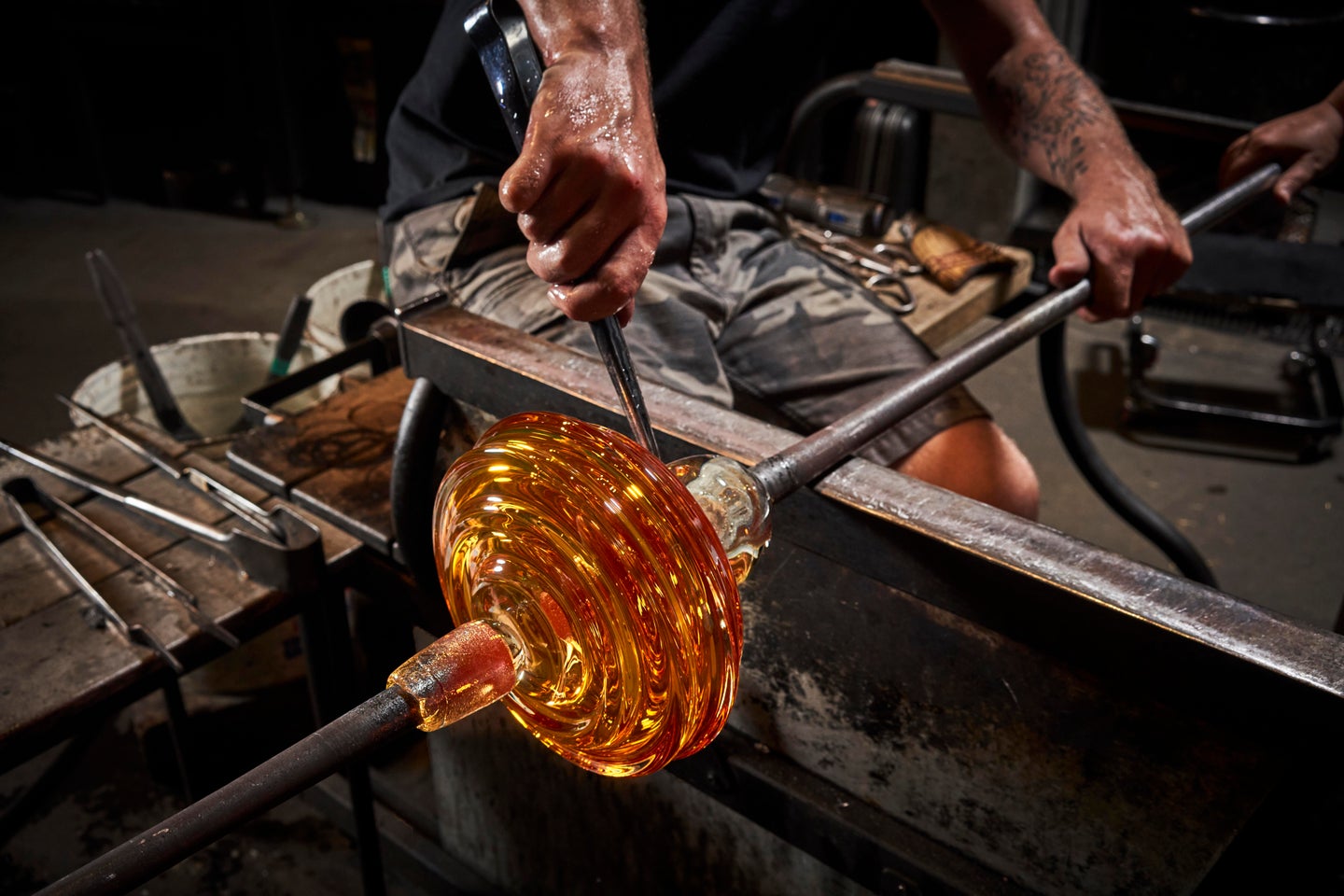How glassblowers turn silica, soda ash, and lime into stunning works of art
The ancient craft may have a more sustainable future.
EVERYTHING THEY MAKE at the Museum of Glass starts at 2100°F. The approximately 1,000 pounds of molten silica, soda ash, and lime brimming from the facility’s furnace is a kind of Goldilocks—strong enough to hold a shape, yet pliable enough to mold using only lung power and simple hand tools. Raising the temperature of the oven to all-out scorching takes tremendous time and energy, so the crew in Tacoma, Washington, keeps the flames going 24/7. But burning all that natural gas doesn’t do the planet any favors, so the institution made an upgrade in 2021: The new forge uses 41 percent less fossil fuel, thanks to a design that captures some of the heat that would otherwise escape up the flue. Sustainable innovations aside, the craft is much the same as it was when Syrian artisans invented it 2,000 years ago.
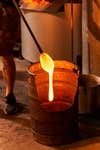
Each project begins with the artist inserting the far end of a blowpipe into the furnace and rolling it back and forth until a gob—it’s actually called that—of glass forms. Any excess is dropped into a steel can and reused.
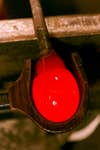
A wooden mold called a block helps shape the molten bubble. Although it cools rapidly, the material is still more than 1800°F. The team soaks the timber in water to create a protective layer of steam that keeps the tool from burning—which would damage it and mar the artwork.

Ben Cobb, who leads the museum’s glass studio, calls his craft a team sport. Here he uses a wooden paddle to provide resistance for Sarah Gilbert, who is to his right, as they flatten the bottom of a vase. Gabe Feenan plugs the blowpipe with his thumb, trapping air in the vessel so it doesn’t collapse.

Glass comes out of the furnace with no color, so artists add hues to the clear gob they draw from the forge. The crew gave this piece an amber tinge, then added a bit more transparent material to refine the shade and size of the artwork.

To create a ribbed effect in their works, museum craftspeople built a custom graphite jig that they roll hot material over.
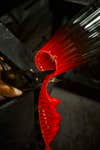
Artisans use rudimentary tools like jacks—which look like large tweezers—paddles, and shears to shape and trim the molten glass. The hot works are soft enough to cut with shears not unlike household scissors.

The museum recycles most of its trimmings, but some—like an aquamarine gem shorn off a molded vase—are beauties all their own.
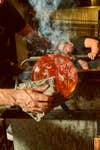
Gilbert works the business end of the blowpipe as Cobb shapes their work into a disk called a rondelle. Newspaper, folded over several times and kept damp so it doesn’t burn, is a common tool for this task.
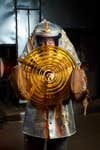
The finished pieces are still a searing 1200°F. To ensure they cool slowly enough that they won’t crack or shatter, the team places them in a 900°F chamber called an annealing oven for several hours.
This story originally ran in the Summer 2021 Heat issue of PopSci. Read more PopSci+ stories.
